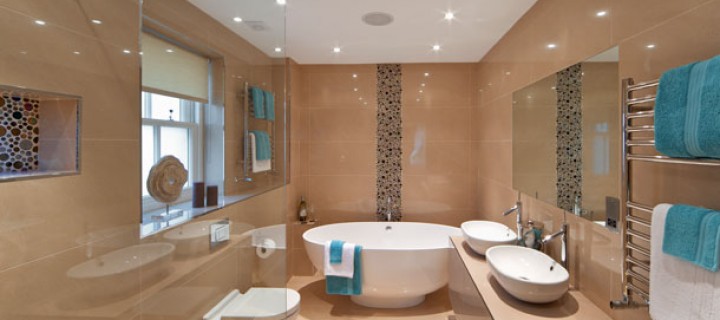Bathroom remodels don’t just happen. At their basic level, bathroom remodels are the result of careful planning, hard work and smart fixture shopping. These tips will guide you through the process of planning and implementing a successful bathroom remodel, so you’ll be sure to be happy with the final results.
Make a Budget
It’s tempting to start your bathroom remodel by shopping around for the coolest fixtures, the latest bathroom gadgets and brand new towels. Before you can even think about buying stylish new bathroom features, you’ll need to determine a firm number for your budget. Whether you’re taking out a loan or dipping into savings, having a firm number in place is crucial. Without financial parameters, your spending can easily balloon out of control as the remodel progresses. Once your budget is in place, then you can start looking at items like a new bathroom vanity, new bathtub and new accessories.
Have Goals and a Plan
Before beginning work, establish your ultimate goal. This will help you prioritize your purchases and design choices. You want your remodeled bathroom to be aesthetically appealing, but it should be functional as well. After all, a bathroom that is being remodeled to stage a home may look very different from a bathroom that is being remodeled for your personal pleasure and comfort.
Once you’ve established your goal, you can make a list of features that aren’t working about your current bathroom design, so you’ll know where to focus your changes. For example, a bathroom that’s being remodeled for the safety of an elderly relative will involve the installation of safety grab bars, extra lighting, non-slip floors and a bathroom vanity with rounded corners and easy-to-turn faucet handles.
Establish a Theme, Color Scheme
Even if your bathroom is being remodeled for practical reasons like installation of new safety features, choosing attractive bathroom colors and matching accessories will help pull the finished product together into a cohesive, fully-realized space.
Picking a theme for your bathroom will help you choose a sensible color scheme and can even help you pick the right fixtures and features. This requires not only choosing the appropriate accessories, but coming up with the right colors when painting your bathroom. For example, a bathroom designed to fit a “rain forest” theme will naturally incorporate several shades of matching green and blue. A bathroom vanity made of natural materials like teak or bamboo will fit with the design thematically. This type of vanity will also serve as a beautiful back drop for a scattering of bathroom accessories like a leaf-shaped soap holder, hand-carved teak tealight holders and an organic cotton green washcloth, all of which also fit with the theme.
Know When to Skimp and When to Spend
You may be working within a budget, but there are some areas where you’ll just have to spend the money. You can offset these expenses by skimping in other areas, if need be. These tips will help you know when to save money and when to spend, spend, spend:
-
Don’t skimp on the contractor. There’s no substitute for quality workmanship. The most beautifully designed bathroom won’t mean much if its plumbing and installation is faulty.
-
Save money by keeping the plumbing where it is. It’s usually not necessary to move plumbing fixtures like the toilet, sink and bathtub. Working within the framework of your old bathroom plumbing will help you save money.
-
Save money by painting it yourself. If you’re trying to cut corners, painting the walls yourself can help you save a couple hundred dollars.
-
Don’t skimp on the new bathtub or the bathroom vanity. These major fixtures tend to be prominent, heavily used items in the bathroom. If you’re replacing either of these items, resist the urge to buy whatever is cheapest. If you can’t reasonably afford a new bathroom vanity or bathtub, try repainting the existing vanity or refinishing the tub.
-
Spend a little extra on green plumbing fixtures. Sometimes these items are more expensive up front, but buying low-flow, low water use plumbing fixtures will save you money over time.
For more tips, have a consultation with your remodeling contractor. He or she will be able to walk you through the remodeling process, answer your questions, and tell you what to expect.





